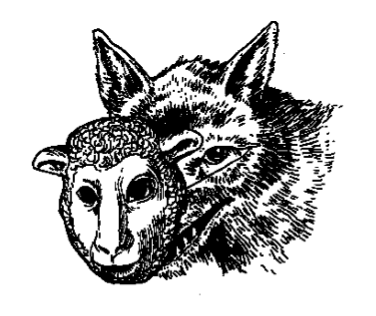1. Physiognomy as Character
On the other side of Minneapolis from where I live stands the Minneapolis Institute of Arts, which houses among its various collections a portrait, Francisco de Goya’s Self-Portrait with Dr. Arrieta, from 1820. Goya was in his old age when he painted this particular canvas and had recently recovered from an illness during which Dr. Arrieta had cared for him. The painting acknowledges his gratitude with an inscription at the bottom, which in translation reads, “Goya gives thanks to his friend Arrieta for the expert care with which he saved his life from an acute and dangerous illness which he suffered at the close of the year 1819 when he was seventy-three years old. He painted it in 1820.”
Dr. Arrieta stands to Goya’s right, by the side of the bed, supporting the painter and holding a cup of water or medicine for him to drink. The doctor’s face is brightly lit, as if coming out of the darkness, and his face expresses professional forbearance. He looks downward, not at Goya himself—as a doctor, he has seen all this before—and his intelligence and strength of character are visible on his face. This is in contrast to his patient, Goya, whose eyes are shut in pain (a painter presenting himself with his eyes shut is a singularly disturbing image), his expression half in darkness, as if the darkness were eating away at him. His mouth hangs half-open; the bedclothes appear to be slightly soiled. Goya’s left hand tugs in a cramped gesture at the bedsheets, a characteristic movement of the dying. The painter presents himself in extremity, as an unheroic person transformed by his sickness, fading into obscurity.
This is the painting’s foreground. However, very dimly in the background and not easily seen in reproductions of this self-portrait is the presentation of the painter’s subjective world: three demons residing in that darkness, those who haunted Goya during his illness. As the museum catalogue points out, these devils became a distinctive feature of his work after 1788. Without the demons, there is no Goya. The viewer can’t have the foreground without the background, the visible without the seemingly invisible, the light without the shadow. In this struggle Dr. Arrieta brings not only his attention to Goya but also, more abstractly, illumination, without which any painter is helpless. He stands with his back to the demons and their punishing subjectivity as a kind of shield.
The only reason I bring Goya’s painting up at all is that I was forced to think about it and the evolution of literary and painterly portraiture generally when I was commenting on a particular scene in a story by a student...
You have reached your article limit
Sign up for a digital subscription and continue reading all new issues, plus our entire archives, for just $1.50/month.
Already a subscriber? Sign in





